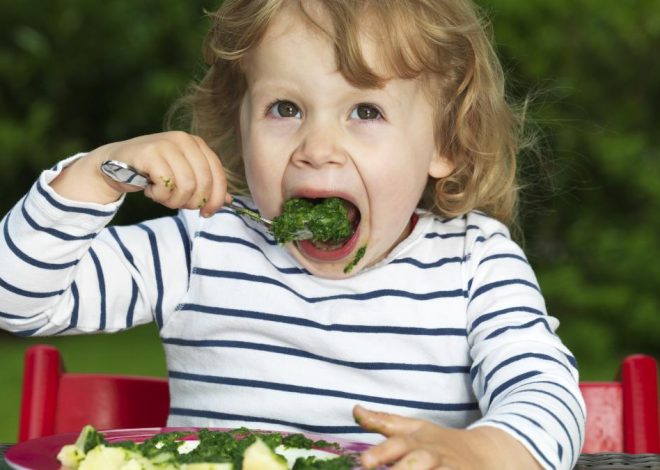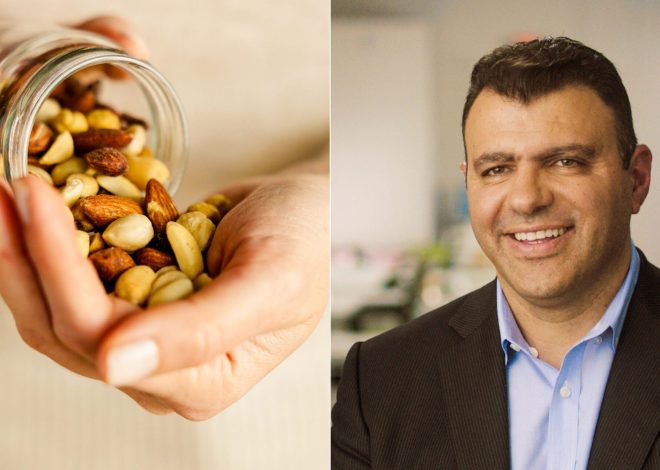
It’s the milk that does it – or is it no longer?
Is the love of milk over? A short story about the image change of an animal pick-me-up on International Milk Day.
Animal welfare, climate protection, health. Global mega-issues are damaging milk’s good reputation. Does milk no longer wake up tired men? The desire for milk has diminished. On today’s International Milk Day, dpa author Ulrike von Leszczynski describes the path from tradition to ethical debate.
“Milk makes tired men cheerful?” The pleasant-sounding advertising slogan from the post-war years in West Germany sounds out of date today. In addition to flexitarians who consciously eat less meat, there are more and more people in Germany who drink less cow’s milk out of conviction.
Organic farming | Food transition
Support project for organic farmers
Milk consumption falls more than meat
Experts see this abstinence as more than just a short-lived fashion. For the Society for Consumer Research, those who “reduce milk” are no longer a fringe group. Since food is about more than just nutrients, cow’s milk has had an image problem. But is it really a thing of the past – and what could be the reasons for the decision against a staple food? Questions about Milk Day on June 1st.
“Meat and all other animal products have come under massive attack.”
In terms of numbers, drinking milk in Germany is on a steady downward trend. According to data from the Federal Office for Agriculture and Food, per capita consumption in 2023 was around 46 kilos. According to the authority, in the mid-1990s it was around 60 kilos. However, the Federal Statistical Office still lists Germany as the largest producer of cow’s milk in the EU, and the dairy industry is one of the highest-revenue sectors of agriculture in this country. What’s going on?
statistics
Meat consumption reaches low
Debates and political pressure
“In Germany, we are moving strongly in the direction of non-animal staple foods,” says Jana Rückert-John, Professor of the Sociology of Food at Fulda University. “Meat and all other animal products have come under massive fire from various directions in social debates. It’s about animal welfare, the CO₂ footprint, sustainability and climate protection. “There is also political pressure on this issue.” For the researcher, the decline in meat and milk consumption is closely linked. But for her, there is still a difference. “Animals are killed for meat.”
Issues such as conventional animal husbandry and high-performance dairy cows, which only see their calves for a few hours after birth and themselves barely live past the age of five, are not just of concern to vegans. According to the latest nutrition report, a representative survey commissioned by the Federal Ministry of Agriculture, 80 percent of shoppers pay attention to how a farm animal lives. When choosing their food, West Germans pay more attention to animal welfare than East Germans – and women more often than men. A good half of those surveyed have already bought vegetarian or vegan alternatives – most commonly plant-based substitutes for drinking milk and dairy products.
“Dairy products are moving away from the original product. It’s like seeing a whole animal in the oven or fish fingers and chicken nuggets.”
Ethical nutritional standards
On the changing image of milk in times of climate protection, animal welfare and health dogma.
Is there a subliminal culture war going on over milk? Rückert-John would not go that far. “The debate is also a phenomenon of an affluent society,” she says. In Germany, there are enough substitute products for milk. “Nutrition is more often seen as a problem because it no longer has just a health dimension,” she adds. It is also about values such as the environment or climate. “Eating and drinking are basic needs – and at the same time so much more,” says the federal government’s latest nutrition strategy. It is about enjoyment, connection, tradition, culture and togetherness. Nutrition is also often an expression of “an attitude to life or a means of self-realization.”
BMEL | Nutrition report
Plant-based, but happy and delicious!
Pure milk is particularly affected by the reluctance of buyers. The downward trend in cheese made from cow’s milk is far less rapid. Is there a logic to this? “Dairy products are moving away from the original product. It’s as if I see a whole animal in the oven, or fish fingers and chicken nuggets,” says researcher Rückert-John. With the processing of food, problems also become more invisible.
The Federal Republic is far from banning milk. According to surveys conducted by the Society for Consumer Research, almost 93 percent of households continue to buy UHT or fresh milk, just less.
“93 percent of households continue to use UHT or fresh milk, just less.”
Two servings of milk per day
This year, the German Nutrition Society (DGE) has revised its recommendations for milk and dairy products downwards – from three to two portions per day. “That corresponds to a glass of milk and a yogurt per day – or a yogurt and a slice of cheese,” explains DGE spokeswoman Antje Gahl. Why the smaller portion? “In the new recommendations, we have not only taken health into account, but also environmental impacts. These include greenhouse gas effects and land use such as pastures,” she adds. Consumption habits have also been included in the model calculations.
For Gahl, the lower milk consumption is not a big deal. “Eating habits are changing. In recent years we have seen a switch towards more vegetarian or vegan diets,” she says. Every generation eats differently. “In the post-war period, it was all about being full, then came the wave of fitness and slimming.” Today, it is no longer just about meeting demand. Skepticism about milk is not a new phenomenon. There have always been discussions about how healthy it is and how it is tolerated – the keyword is lactose intolerance, reports the nutrition expert.
How healthy is milk?
In terms of nutrients, it offers a lot of high-quality protein, calcium, vitamins B2 and B12, vitamin A, iron, magnesium, zinc and iodine. Pure plant drinks cannot compete with that, says the DGE expert. “The calcium content alone is not enough. That is why all of these drinks are enriched with nutrients.” Nutritionists therefore prefer to speak of substitutes for cow’s milk rather than alternatives. But there is little dogmatism. “Milk and dairy products are healthy for adults in the right quantities – but they are not absolutely necessary,” says Gahl.
Attention kids and teens!
For children and adolescents, it’s different because of bone growth. “We don’t recommend a vegan diet for children because it’s difficult to cover the nutritional needs,” she explains. “Of course, substitute products can be used, but parents need to be really knowledgeable about food.” Without milk, children would have to eat a lot of whole grain products, pulses, nuts and seeds. “And they have to like them too.”
“Milk and dairy products are healthy for adults in the right amounts – but they are not essential”
Sociologist Rückert-John has seen how her students deal with milk in their everyday lives at her university. The trend is towards abstinence – but the more young people look into it, the more complicated the matter becomes, she reports. The ecological balance of the soy and almond variants does not necessarily have to be better than that of cow’s milk. Rainforests in Brazil may have been cut down for soy fields, and too much water may have been used for almonds.
“Consumers are overloaded and overtaxed,” observes the professor. “The many debates about what we should eat and where food comes from are incredibly complex. You can’t weigh everything up and think it through.” For some, the only option for a clear conscience is to shop at an organic supermarket. But in the end, this is not just a question of conviction, but also of the wallet.

Ethel Purdy – Medical Blogger & Pharmacist
Bridging the world of wellness and science, Ethel Purdy is a professional voice in healthcare with a passion for sharing knowledge. At 36, she stands at the confluence of medical expertise and the written word, holding a pharmacy degree acquired under the rigorous education systems of Germany and Estonia.
Her pursuit of medicine was fueled by a desire to understand the intricacies of human health and to contribute to the community’s understanding of it. Transitioning seamlessly into the realm of blogging, Ethel has found a platform to demystify complex medical concepts for the everyday reader.
Ethel’s commitment to the world of medicine extends beyond her professional life into a personal commitment to health and wellness. Her hobbies reflect this dedication, often involving research on the latest medical advances, participating in wellness communities, and exploring the vast and varied dimensions of health.
Join Ethel as she distills her pharmaceutical knowledge into accessible wisdom, fostering an environment where science meets lifestyle and everyone is invited to learn. Whether you’re looking for insights into the latest health trends or trustworthy medical advice, Ethel’s blog is your gateway to the nexus of healthcare and daily living.



